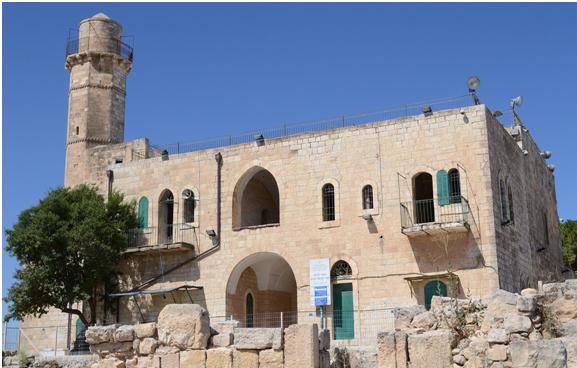The Israeli Civil Administration’s subcommittee for objections in the planning council for the occupied West Bank has rejected the development plan for the Nabi Samuel Antiquities Site. Following the plan’s preparation by the military Staff Officer for Parks and Nature Reserves in 2013 and its submission for approval, the organizations Bimkom and Emek Shaveh filed an objection with the Civil Administration subcommittee in the name of the residents of Nabi Samwil/Samuel.
The acceptance of the objection by the subcommittee and rejection of the development plan are important achievements for the Palestinian residents of the village, even if only temporary. Following the development plan’s rejection, the Civil Administration intends to submit a new one which will be more limited in its scope.
The village of Nabi Samwil/Samuel is located about one kilometer north of the Ramot neighborhood in Jerusalem and outside the municipal boundaries of the city, adjacent to the Nabi Samuel archaeological site located at the top of a hill. The site has a mosque, a tomb attributed to the Prophet Samuel, and ancient remains from various periods. To its northeast lies the Palestinian village of al-Jib, to the northwest are the settlements Givat Ze’ev and Giv’on, and to the west is the village of Beit Iksa. The Oslo Accords placed the village within Area C. Today it is home to about 200 residents.
In 1995, the site was declared a national park encompassing an area of about 3,500 dunams, which include the archaeological site, the residents’ homes, and agricultural lands that belong to them. Of the area declared a national park, only 52 dunams constitute the actual archaeological site. Nabi Samuel is considered a holy place for Jews, Christians and Muslims. Most of the visitors to the site are Jewish worshipers who visit the tomb they believe to be the Tomb of Samuel, situated within the mosque. Earliest archaeological remains there date from the Hellenistic period (postdating Samuel’s life, based on standard interpretation of the Bible, by a minimum of 800 years).
The village of Nabi Samwil has no approved master plan. The villagers urgently need such a plan so that they can legally build basic infrastructure and expand the areas designated for residential homes and public buildings. Without a master plan, the future of the village is in question. In June 2013, the Civil Administration issued a new master plan for the site. However that plan completely ignored the residents and their needs and focused only on the antiquities site. It proposed the construction of a tourism complex adjacent to the antiquities, which would include a restaurant, a visitors’ center, a souvenir shop, paths, a guardroom, and more. The tourism complex was set to incorporate the mosque, which is used by the residents to this day, as well as the Muslim cemetery and lands privately owned by the residents.
According to Emek Shaveh: “The decision to reject the plan is an important achievement for the residents, whose village has become a tourist center and a site of mass worship, while their own presence and needs have been grossly ignored. The Civil Administration intends to submit a new master plan, which, it claims, will be more modest. We hope that this plan will address the needs of the residents and not only prioritize tourist attractions and the needs of the Jewish worshipers who visit the site.”
Related:



